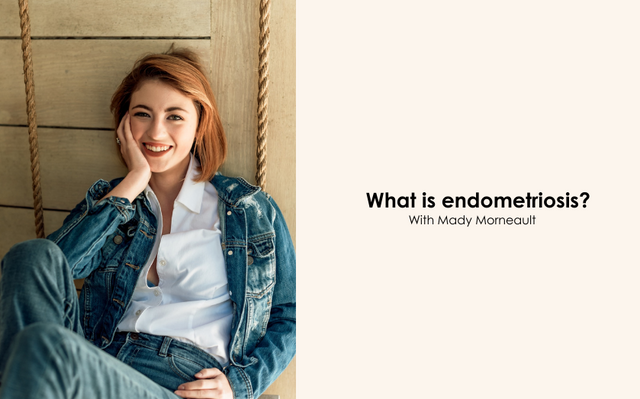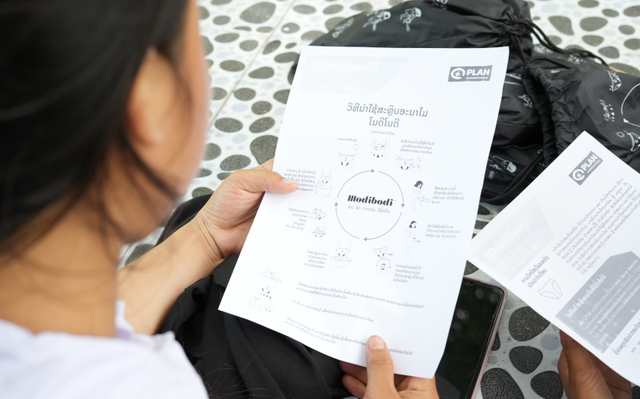‘Mine is a story for all patients who have been gaslighted, shamed or dismissed by healthcare professionals. My mission is to educate those still waiting for a diagnosis (or living misdiagnosed), to validate young menstruators missing school due to painful periods and to create a fully inclusive community where all chronic illness warriors can empower themselves...”
- Madelyn Morneault, patient advocate and ‘endometriosis warrior’
For decades, young women have been taught that a painful period is simply an initiation into womanhood. Girls are warned that the first time they engage in sexual intercourse will be a painful experience and irregular menstrual cycles can be “fixed” by taking birth control pills.
In reality, symptoms that are too often labelled as “normal” or “just feminine problems” are often indicators of a much more serious medical condition: endometriosis.
Despite 10% of American women and 11% of Australian women battling endometriosis, it’s still widely misdiagnosed, misunderstood, and underfunded. Endometriosis is a complex disease consisting of glands and stroma which are similar to the endometrium, but not the same tissue as the uterine lining. This means it’s impossible for endometriosis to slough and shed itself like the endometrium does during your menstrual cycle. Instead, it creates its own oestrogen which promotes disease growth, pelvic pain outside of your menstrual cycle, and progresses over time.
While endometriosis most commonly causes complications within the reproductive system, it is a full body disease that has been found on every organ except the spleen! The most common disease symptoms include abnormal vaginal bleeding, irregular menstrual cycles, severe pelvic pain, chronic fatigue, pain with sex or penetration, lower back pain, Irritable Bowel Syndrome – even lung collapse![1]
Why is endometriosis so difficult to diagnose?
One of the most difficult challenges for the endometriosis patient is the journey to diagnosis. Endometriosis is an invisible illness, and it’s impossible to identify an endometriosis patient based solely on their looks. Most endometriosis is not even visible on MRIs or ultrasound exams, so the only way to officially diagnose the disease is through laparoscopic surgery (a minimally invasive procedure where a small camera is inserted through your belly button).
All of these factors contribute to the lengthy average 7 to 10 journey from symptoms to diagnostic surgery, since most doctors use laparoscopic surgery as a last resort only after hormonal and pelvic floor physical therapy treatments fail.
Unfortunately, while birth control pills may help patients manage their symptoms, it can’t treat the disease itself or prevent it from progressing[2]. Therefore, many endometriosis patients have to go through years of ineffective treatment before they eventually undergo diagnostic surgery.
Endometriosis myths
One of the most common myths about endometriosis is that a hysterectomy will cure it – and the truth is – NO it will not. While endometriosis is similar to the uterine lining, it is still an independent disease, which means removing the uterus will not stop the disease from progressing in other areas of the body. Basically, endometriosis can affect the uterus, but the uterus can’t affect endometriosis!
Another common myth is that endometriosis is a reproductive disease since it commonly affects a patient’s fertility. While it’s true endometriosis affects the reproductive system, “extra-pelvic” disease is not uncommon, and there’s a 40% chance endometriosis patients will have the disease in their digestive or urinary systems, as well as an 8% chance they’ll have it in their respiratory system[3].
According to my surgeon, I personally have endometriosis on my diaphragm and colon, as well as ‘splattered’ across my pelvic cavity.
Other myths include that a patient can be “too young” to have endometriosis, that it only affects patients who menstruate, and that it most commonly affects white women. Endometriosis has been recorded in foetuses, post-menopausal women, and even in three rare male cases.
Think you might have endometriosis? What should you do now?
While endometriosis may be incurable, it is treatable. After a diagnostic laparoscopy, the first step to healing is finding an expert endometriosis surgeon to perform excision surgery. Endometriosis surgery requires specialised skills and training which are not the same skills used by obstetricians and gynaecologists delivery babies every day.
The gold standard treatment for endometriosis is excision surgery, which is different from the laser ablation treatment practised by a wider range of OBGYNs. Laser treatment which only removes the top layer can leave the roots behind, which means the disease just grows back. Personally, I believe I would have received proper treatment sooner if I hadn’t given dismissive doctors second, third and fourth chances, but at the time I felt I had nowhere else to go.
My advice to others is to educate yourself and find a specialist who believes you. The more you know about your condition, the better you can advocate for yourself.
Your pain and your struggles don’t make you ‘weak’, they make you worth of care!
Why do you like using Modibodi?
I once bled for over 200 hundred days straight before my first excision surgery – no exaggeration – and the constant pelvic pain and inflammation made using penetrative products like tampons and menstrual cups physically impossible.
Besides, I’ve always had a deep love for the ocean and the environment, and I couldn’t continue using so many disposable pads while maintaining a clear conscience. Finding period-proof underwear was a huge game changer for me.
I love Modibodi because they’re affordable and exceptional quality. I also appreciate the brand’s efforts to be inclusive by creating products such as the Detachable Bikini, for disabled customers like me.
I will never go back to using products which cause harm both to my body, and the environment!
For more information about endometriosis, check out the following organisations:
Australia: www.qendo.org.au; www.endometriosisaustralia.org
Patient advocate and ‘Endometriosis Warrior’ Madelyn Morneault created the "Miss Misdiagnosis" blog and educational platform to encourage patients struggling with persistent pain to take control of their own health, particularly in relation to endometriosis and invisible illness.
Medical disclaimer: While author Mady Morneault is a patient advocate and not a medical professional, all disease content and medical claims are regularly reviewed by endometriosis experts.


[1] 1 Medical information sourced and fact-checked through Center of Endometriosis Care: https://centerforendo.com/endometriosis-understanding-a-complex-disease
[2] 2 Medical information sourced and fact-checked through Center of Endometriosis Care: https://centerforendo.com/endometriosis-understanding-a-complex-disease 3 Statistics sourced from Extra Pelvic Not Rare: https://extrapelvicnotrare.org/the-abcs-of-epd-extrapelvic-disease-for-endometriosis/
[3] 3 Statistics sourced from Extra Pelvic Not Rare: https://extrapelvicnotrare.org/the-abcs-of-epd-extrapelvic-disease-for-endometriosis








